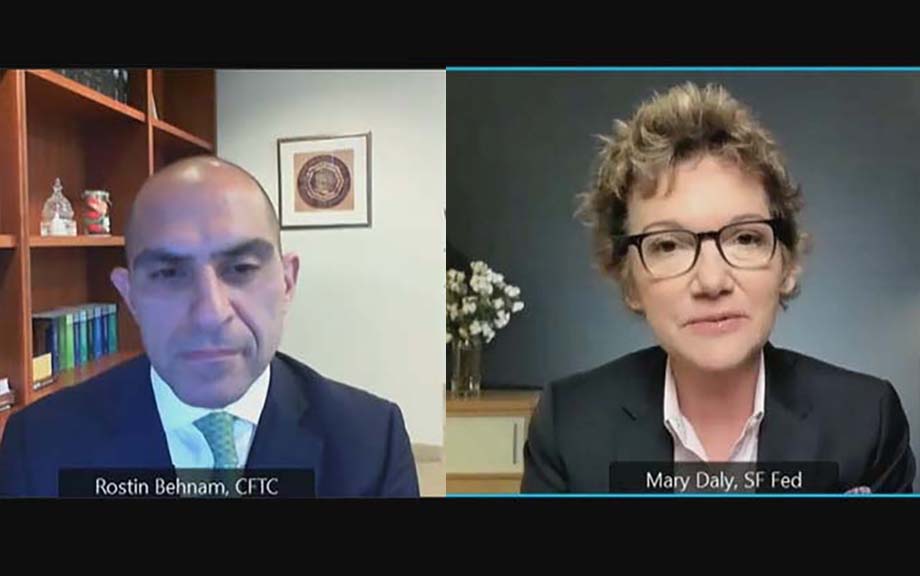How Liquid Has the Treasury Market Been in 2022?

Policymakers and market participants are closely watching liquidity conditions in the U.S. Treasury securities market. Such conditions matter because liquidity is crucial to the many important uses of Treasury securities in financial markets. But just how liquid has the market been and how unusual is the liquidity given the higher-than-usual volatility? In this post, we assess the recent evolution of Treasury market liquidity and its relationship with price volatility and find that while the market has been less liquid in 2022, it has not been unusually illiquid after accounting for the high level of volatility.
How Can Safe Asset Markets Be Fragile?

The market for U.S. Treasury securities experienced extreme stress in March 2020, when prices dropped precipitously (yields spiked) over a period of about two weeks. This was highly unusual, as Treasury prices typically increase during times of stress. Using a theoretical model, we show that markets for safe assets can be fragile due to strategic interactions among investors who hold Treasury securities for their liquidity characteristics. Worried about having to sell at potentially worse prices in the future, such investors may sell preemptively, leading to self-fulfilling “market runs” that are similar to traditional bank runs in some respects.
The Global Dash for Cash in March 2020

The economic disruptions associated with the COVID-19 pandemic sparked a global dash-for-cash as investors sold securities rapidly. This selling pressure occurred across advanced sovereign bond markets and caused a deterioration in market functioning, leading to a number of central bank actions. In this post, we highlight results from a recent paper in which we show that these disruptions occurred disproportionately in the U.S. Treasury market and offer explanations for why investors’ selling pressures were more pronounced and broad-based in this market than in other sovereign bond markets.
At the New York Fed: Seventh Annual Conference on the U.S. Treasury Market

On November 17, 2021, the New York Fed hosted the seventh annual Conference on the U.S. Treasury Market. The one-day event, held virtually, was co-sponsored by the U.S. Department of the Treasury, the Federal Reserve Board, the U.S. Securities and Exchange Commission (SEC), and the U.S. Commodity Futures Trading Commission (CFTC). The agenda featured one panel on the effects of sudden changes in investor positioning, and two panels discussing proposals to strengthen Treasury market resiliency and improve market intermediation from various public and private sector perspectives. Speeches touched on recommendations from a recent progress report by the Inter-Agency Working Group for Treasury Market Surveillance (IAWG), and efforts to improve market resilience by reforming market structure and regulation. Finally, a fireside chat discussed the importance of increasing diversity of experiences and perspectives within the public and private sectors.
Did Dealers Fail to Make Markets during the Pandemic?
Sarkar and coauthors liquidity provision by dealers in several important financial markets during the COVID-19 pandemic: how much was provided, possible causes of any shortfalls, and the effects of the Federal Reserve’s actions to support the economy.
How Competitive are U.S. Treasury Repo Markets?
The Treasury repo market is at the center of the U.S. financial system, serving as a source of secured funding as well as providing liquidity for Treasuries in the secondary market. Recently, results published by the Bank for International Settlements (BIS) raised concerns that the repo market may be dominated by as few as four banks. In this post, we show that the secured funding portion of the repo market is competitive by demonstrating that trading is not concentrated overall and explaining how the pricing of inter-dealer repo trades is available to a wide-range of market participants. By extension, rate-indexes based on repo trades, such as SOFR, reflect a deep market with a broad set of participants.
Treasury Market When‑Issued Trading Activity
Despite the importance of when-issued trading of Treasury securities, and the advent of FINRA’s TRACE database of trading statistics, little is known publicly about the level of WI activity. In this post, the authors address this gap by analyzing WI transactions recorded in TRACE.
Explaining the Puzzling Behavior of Short‑Term Money Market Rates
Since 2008, the Federal Reserve has dramatically increased the supply of bank reserves, effectively adopting a floor system for monetary policy implementation. Since then, the behavior of short-term money market rates has been at times puzzling. In particular, short-term rates have been surprisingly firm in recent months, despite the large increase in reserves by the Fed as a part of its response to the coronavirus pandemic. In this post, we provide evidence that both the supply of reserves and the supply of short-term Treasury securities are important factors for explaining short-term rates.
How Liquid Is the New 20‑Year Treasury Bond?
How the Fed Managed the Treasury Yield Curve in the 1940s
The coronavirus pandemic has prompted the Federal Reserve to pledge to purchase Treasury securities and agency mortgage-backed securities in the amount needed to support the smooth market functioning and effective transmission of monetary policy to the economy. But some market participants have questioned whether something more might not be required, including possibly some form of direct yield curve control. In the first half of the 1940s the Federal Open Market Committee (FOMC) sought to manage the level and shape of the Treasury yield curve. In this post, we examine what can be learned from the FOMC’s efforts of seventy-five years ago.











 RSS Feed
RSS Feed Follow Liberty Street Economics
Follow Liberty Street Economics